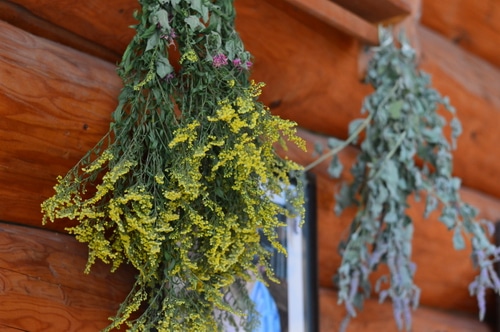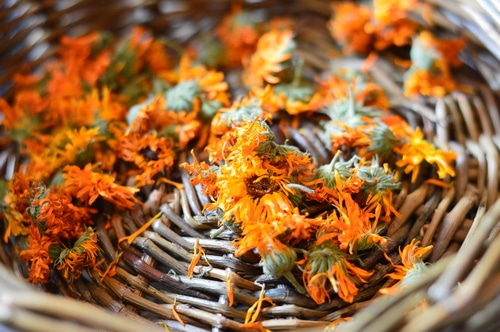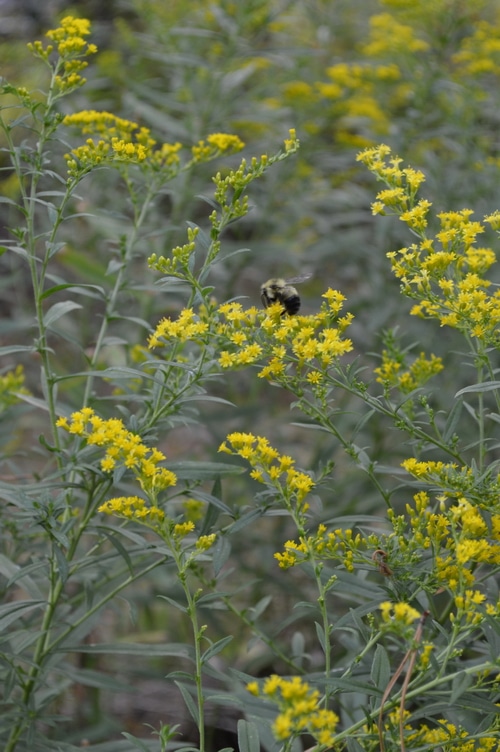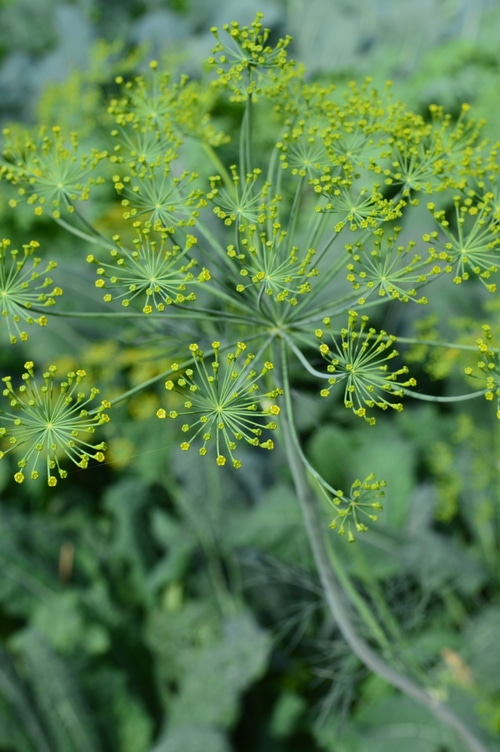Are you feeling overwhelmed with getting your herb harvest in? This time of year the wild herbs and the garden herbs demand as much attention as the vegetables. It’s easy to tell when the vegetables need harvesting but what about the herbs? Here’s a few tips to help you make the most of the herb harvest, before it’s too late.
- Perennial Herbs that are harvested for their leaves can be harvested on the stalk several times during the growing season. Simply take a gathering basket and a pair of scissors or small pruning shears and trim the plant on the stem just above a pair of green leaves. The plant will continue to grow sending up two stems where there was only one before. If you have a long growing season you will get a second harvest from these new stems, doubling your harvest. Plants that this applies to include mint family plants like motherwort, peppermint, lemon balm, and rosemary, as well as sage, parsley, dill, fennel, comfrey, and marshmallow, to name just a few.
- To dry these plants, simply tie them in bundles using elastic bands and hang them from hooks on the walls of an airy room, or outdoors, under a deck, if your climate has low humidity. They will be dry within a week and can be stripped of the leaves and stored in jars. The leaves are ready to put away when they crumble easily.

- Herbs that are harvested for their flowers will continue to produce more flowers if you pinch the flowers off where the flowers join the stem at the base of the calyx. Do this while the petals are still fresh, before the flower produces seed. Lay the flowers on a paper towel in a basket and place it in an airy room out of direct sunlight. The flowers will naturally air dry and retain their color, fragrance, and medicinal properties. The herbs that do well with this method of harvesting and drying include chamomile, calendula, dandelion, roses, hawthorn, elderflower, mullein, and daisy to name just a few.

- Other herbs that are harvested for their leaves like mullein, strawberry, and plantain can be harvested by removing just a few leaves at a time. After gathering lay the leaves out on a basket and allow to dry in the shade. They will take a few days to become crispy.
- Never place medicinal herbs in the microwave to dry. The radiation from the microwaves will disrupt the medicinal worth of the herbs.
- In humid areas, an electric dehydrator on low heat with a fan, can be used to dry herbs. If you have a gas range or a convection oven you can use that without heat to dry herb leaves.
- Before packaging herbs in glass jars with tight fitting lids ensure that the herbs and the jar is fully dry. Herbs that are properly dry will crumble when squeezed in the hand.

- You don’t have to harvest every herb from your herb garden. Herbs have benefits for the insects and wild life in your garden too, by providing nectar, food, and habitat. So don’t fret if you can’t get it all in before it goes to seed.

- Herbs that we use the seed with include dill, fennel, caraway, poppy, and coriander. Harvest these as the seed head begins to turn from green to grey or brown. Cut the seed heads from the stalk and place the seed heads in a paper bag to finish drying. This insures that the seed isn’t cast on the ground.
- As you are harvesting herbs, consider extending your season by planting a few hardy vegetables for a fall and winter garden.
This is the natural time for herbs to cast their seeds so I like to get a head start on spring by planting bienniel and perennial herb seeds like woad, burdock, hollyhock, echinacea, and others. If you live where the winters get below freezing save you annual herbs for spring planting, though. You can plant the seed close together and plan to space them out in the spring once your spring garden layout is firm in your mind. If you have a wedding, garden party, or family reunion planned for next summer, this would be the time to plant perennial or bienniel flower seeds that will bloom next summer, to beautify your yard.

The shorter your growing season the more you need a plan to get the most of your herb harvest. It’s easy to get overwhelmed. With these tips you can organize your priorities and get the most out of your herb harvest season.




Love all the information in this article. It answers some questions I had in my mind about using my dehydrators. I’ve been trying to collect my honeysuckle flowers as best I can. Is there any medical use for honeysuckle ? I’m going to try making honeysuckle jam if I get enough honeysuckle. Does it all have to be the white variety of honeysuckle ? I have 3 different kinds that I use in my teas.
I know it will effect the color of the jam , but can the other other colored honeysuckle flowers be used in the jam also. I could not find any information on that . Thanks
Hi Chris
Just wanted to pop in to tell you how much I’m enjoying the info you share with all of us on your email list.. It’s been very helpful and informative.
Looking forward to your next email
Thanks
Traci